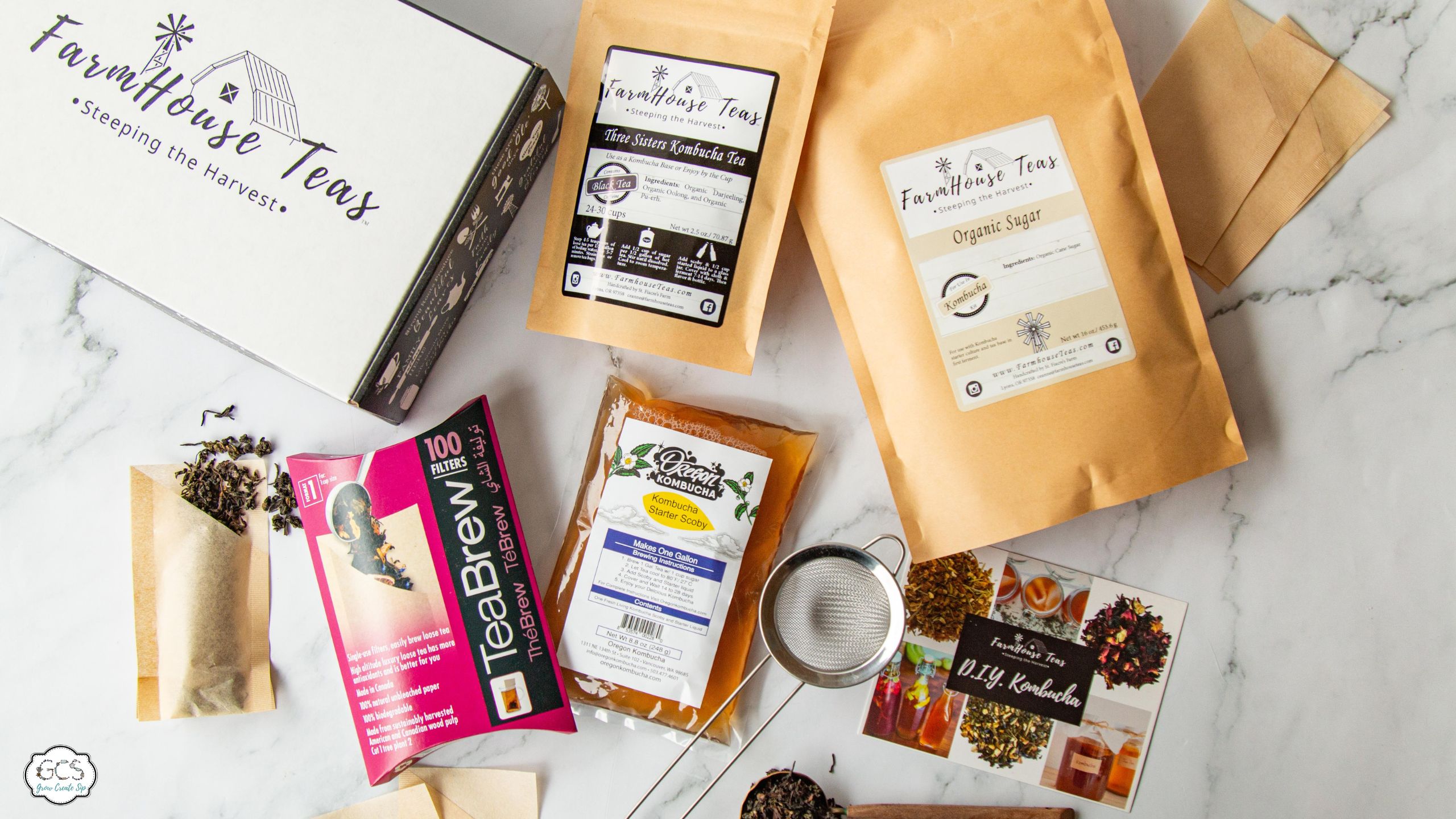Kombucha Eels: A Not-So-Pleasant Surprise in Your Homemade Brew
Aug 29, 2023
As a kombucha home brewer, there's nothing quite as satisfying as crafting your own batch of kombucha, especially if it's cherry almond kombucha. The tangy, fizzy, and probiotic-rich drink has become a staple in many households. However, along your brewing journey, you may encounter a peculiar organism known as kombucha eels. Finding vinegar eels in your kombucha can be disconcerting. But, even though it may gross you out a little, don’t worry, they aren’t harmful to you. In this guide, we will delve into the world of kombucha eels, explore their role in the brewing process, and provide you with valuable insights on how to manage them effectively.
What are Kombucha Eels?
Kombucha eels, similar to vinegar eels, are microscopic nematodes that occasionally find their way into kombucha brews. Kombucha eels are a species of roundworm which like to live in an acidic environment. These tiny worms are harmless to humans and do not affect the taste or quality of the finished product. To identify kombucha eels, look for slender, thread-like organisms swimming in your brew. They are usually around 1-2 millimeters long and have a distinctive wriggling movement. While their presence may initially raise concerns, rest assured that they are not harmful to you the kombucha brewer. So you may find them in a batch or homemade vinegar or kombucha at some point. They are non-parasitic and harmless to humans, but they will damage your culture so it is important to know how to deal with them. They also happen to be something that people grow on purpose for fish food.
Excessive growth of kombucha eels may indicate an imbalance in the brewing process, which can impact the overall taste and quality of the brew. Therefore, it is important to monitor and manage the eel population to maintain a healthy and thriving brew.

Image credit: Screenshot via Google
Are Kombucha Eels and Vinegar Eels the Same?
No, kombucha eels and vinegar eels are not the same. While both are types of nematodes, they have different characteristics and are associated with different fermented beverages.
Kombucha eels, also known as "kombucha worms," are microscopic nematodes that can sometimes be found in kombucha brews. They are harmless to humans and play a role in the fermentation process of kombucha. Kombucha eels are typically slender, thread-like organisms that can be seen swimming in the liquid.
On the other hand, vinegar eels are a different species of nematodes that are commonly found in homemade vinegar or vinegar cultures. They are also harmless to humans and serve as decomposers, aiding in the breakdown of organic matter in the vinegar-making process. Vinegar eels are longer and more slender than kombucha eels, and they have a distinctive wriggling movement.
While both types of eels share some similarities, such as their microscopic size and harmless nature, they are associated with different fermented beverages and have slightly different characteristics.
The Legal Stuff
The contents of this blog are made available via St. Fiacre's Farm LLC through Grow Create Sip and Farmhouse Teas and are for informational purposes only. This blog does not constitute medical advice; the content is not intended to be a substitute for professional medical advice, diagnosis, or treatment. Always seek the advice of a qualified healthcare provider with any questions you may have regarding a medical condition. If you think you may be suffering from any medical condition, you should seek immediate medical attention. You should never delay seeking medical advice disregard medical advice or discontinue medical treatment because of information provided by St. Fiacre's Farm, Farmhouse Teas or Grow Create Sip.
Reliance on any information provided by this webinar is solely your own risk. St. Fiacre's Farm LLC (along with Farmhouse Teas and Grow Create Sip) is a participant in the Amazon Services LLC Associates Program, an affiliate program designed to provide a means for our team to earn fees for recommending our favorite products! Along with additional affiliate programs not associated with Amazon. We may earn a small commission, at no additional cost to you, should you purchase an item after clicking one of our links. Thanks for supporting us!
How do I know if my kombucha has vinegar eels?
Hold your container of kombucha up to the light or shine a flashlight into your brewing vessel. You will see the minuscule, little worms moving and swimming around at the surface in your liquid. You may also see spots or clumps of them grouped together near the surface where oxygen and nutrients are most readily available.
How did they get in my kombucha?
Your kombucha can become contaminated with vinegar eels a couple of different ways.
- The first would be if you were given a SCOBY by a friend whose brew was contaminated and they didn’t know it.
- The second most likely way is if your work area is not kept clean and they are introduced as you worked bottling and refreshing your kombucha. Wipe down your work area and any bowls or utensils with hot soapy water before using them as you pour off your kombucha.

Photo by Kayla Joy Creative
Managing Kombucha Eels
Prevention is Key
To minimize and eliminate the presence of kombucha eels in your brew, implementing preventative measures is crucial. Here are a few tips to consider:
- Ensure proper cleanliness and sanitation throughout the brewing process.
- Use high-quality ingredients, including filtered water and organic tea.
- Maintain a stable brewing environment with consistent temperature and pH levels.
- Regularly inspect and clean your brewing vessels and equipment.
Strategies for a Healthy Brew
While kombucha eels are harmless, excessive growth can indicate an imbalance in your brewing process. Here are some strategies to maintain a healthy brew while managing kombucha eels:
-
Monitor Your Brew: Regularly observe your brew for signs of excessive eel population or any changes in smell or taste.
-
SCOBY Health: Focus on maintaining a strong and healthy SCOBY. A robust culture can better manage the presence of kombucha eels.
-
Adjust Brewing Conditions: Fine-tune your brewing conditions, such as temperature and brewing time, to create an environment less favorable for eel proliferation.
-
SCOBY Management: Regularly remove excess yeast and debris from your SCOBY to minimize the food source available to kombucha eels.
Remember, managing kombucha eels is part of the art of brewing. Embrace the learning process and adapt your techniques as you gain experience. The Kombucha Mastery class would be a wonderful prevention step if you haven't already taken it.

Troubleshooting Kombucha Eel Issues
If you find that your kombucha is infested with vinegar eels, it is best to throw out your SCOBY and starter tea and begin again. While the eels are harmless to you, they are harmful to your brew. While the eels are often a natural part of the vinegar making process, they will consume your kombucha culture and cause it to not ferment properly, so you want to get rid of them, sterilized your brewing vessel (and spigot if doing a continuous brew) and start again. While we highly recommend that you start over with a new SCOBY and brew here are some trial and error options for trying to save your current batch of kombucha:
-
Excessive Eel Population: If you notice a sudden increase in kombucha eels, consider reducing the brewing time or adjusting the temperature to create a less favorable environment for their growth.
-
Unpleasant Odor or Taste: If your brew develops an off-putting smell or taste, it may be a sign of an imbalance in the fermentation process. Check the overall health of your SCOBY and adjust your brewing conditions accordingly (time, ingredients, temperature, etc).
-
Sediment Accumulation: Kombucha eels can contribute to the formation of sediment at the bottom of your bottle. To minimize this, ensure proper filtration and decanting techniques when bottling your brew and filter and clean your main brew more often.
Remember, troubleshooting is part of the journey. Don't be discouraged by minor setbacks; they present opportunities for growth and improvement. Find more trouble shooting tips in the Kombucha Mastery E-Course.
Frequently Asked Questions about Kombucha Eels and Vinegar Eels
Are kombucha eels harmful if consumed?
No, kombucha eels are not harmful if accidentally consumed. They are considered safe to consume and pose no health risks.
What is the role or purpose of vinegar eels?
Vinegar eels serve as decomposers in the ecosystem of a kombucha culture. When present they break down organic matter much like crows, the birds of the air, that clean up roadkill.
Are there vinegar eels in apple cider vinegar?
Vinegar eels are not typically found in commercially produced apple cider vinegar. They are more commonly associated with kombucha cultures or homemade vinegar. Store-bought apple cider vinegar undergoes filtration and pasteurization processes that eliminate any potential presence of vinegar eels. In unfiltered apple cider vinegar, there is a possibility of finding vinegar eels as the filtration and pasteurization processes are not employed, allowing for the presence of naturally occurring organisms like vinegar eels.

Vinegar Eels Exposed: Understanding, Preventing, and Treating in Kombucha
We realize you are now staring at your kombucha brew with a flashlight looking for these little worm like creatures. I know that was the first thing we did when we learned about them. Kombucha eels are gross, they are not fun to find in your brew and if you have them they should be dealt with as soon as possible. By implementing preventative measures, maintaining a healthy brew, and troubleshooting any issues that arise, you'll be well-equipped to craft delicious batches of kombucha while nurturing a thriving SCOBY.
If you still aren't sure about your kombucha brewing process our kombucha tea-m and a community of kombucha brewers are here for you in the Herbal Studio & Communi-tea. Not only are there multiple kombucha eel haters to share your passion and help you keep them out of your kombucha but the Kombucha Mastery Course is also included as part of this group of fellow brewers.
We hope you will join us there but in the mean time I would love to know, did you realize that kombucha and vinegar can get these eel type nematodes or is this the first time that you have heard this? Leave me a comment below and please share your experience if your kombucha as been invaded by these tiny creatures before. Remember, brewing kombucha is a creative process that allows for experimentation and personalization which is what is so great about brewing your own kombucha at home!
Dive Deeper into Home Brewed Kombucha
- Health Benefits of Kombucha and How to Make Kombucha at Home
- Guide to Bottling and Flavoring Kombucha - Second Ferment
- Your Questions Answered about Kombucha and Sugar
- Herbal Root Beer Kombucha Recipe
- Kombucha SCOBY Fruit Leather Guide
- Peach Kombucha-Rita















